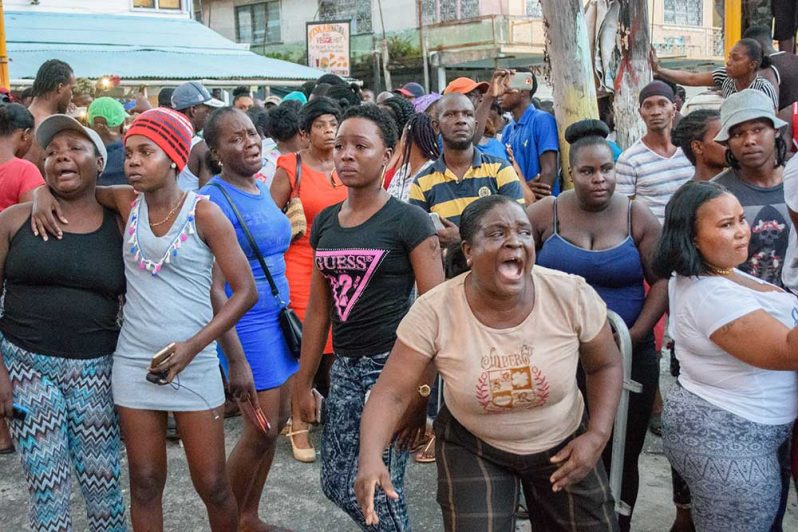IT will go down in history books as among the darkest days – both literally and figuratively – in Guyana’s recent history.
For many, July 9, 2017 was just a casual cherry-picking church-going Sunday. But for law enforcement and prisoners at the Georgetown Prison, it was a day that provided glimpses of the stark reality of life and death – episodes which, perhaps, will haunt them for the rest of their lives.
Early in the day it was relatively quiet. No major crimes or newsworthy events were going to occupy column inches or social media. Or so it seemed.
That was until news of a prison unrest at the Georgetown Prison on Camp Street, quickly circulated, and spread like bonfire.
An immediate visit to the prison by journalists from Guyana Chronicle proved the report was accurate. A conflagration was being battled by ill-equipped members of the Guyana Fire Service (GFS) while hundreds used the opportunity to expand their social media prominence by visually documenting the unfolding events.

The prison was built to house about 600 inmates, but for years, it has been dogged by overcrowding, holding over 1000.
Director of Prisons, Gladwin Samuels, would later in the evening disclose that 1018 of them were housed at the facility at the time of the fire. Many had been on remand.
From all indications, the fire started at the Capital Offences wing of the prison which is situated along highly-commercialised Durban Street. Incarcerated gang member Mark Royden Williams is believed to have started the fire. He was on death sentence for eight counts of murder and manslaughter.
Several onlookers and commentators were keen to note that the fire had been contained at that location, but was reignited at two other locations in the compound.
Soon after, three fires were ripping through wooden structures to shards, leaving the small group of firefighters almost helpless. But they were determined to advance their best efforts, but limited water supply prevented them from doing so.
Prisoners could be seen on the corridors of another concrete building, wailing and begging to be evacuated from the area which would soon be consumed by thick black smoke.
One attempted to escape through an opening in the grill, but was apparently threatened and told to remain where he was. They eventually disappeared.
On the ground, the environment was an unhealthy one – both medically and morally – as smoke filled the atmosphere while onlookers hurled crude remarks and insults at the armed forces which seemed disorganised.
Streets nearby had not been cordoned off. So close to the scene were bystanders, that floating ashes forced them to retreat. A handful of individuals were crying uncontrollably at the thought of their family being lost in the tragedy.
Across on Camp Street, the armed forces had begun escorting some prisoners to the officer’s mess situated directly opposite the prison.
This would eventually prove to be disastrous. But even before that, the arms store was devoured by billowing flames which appeared almost surreal.
Then pandemonium struck! To the amazement of many, including security personnel, the building where the prisoners were being held suddenly burst into flames.
It was unbelievable to many. And as if that weren’t disastrous enough, shots began firing rapidly in the area. Some believe it was an exchange between police and prisoners who had gotten their hands on weapons.
All hell broke loose as individuals scampered to safety in nearby yards and behind makeshift shields. The shots were too many, and too rapid to keep count. But many seemed to enjoy the adrenaline rush.
This went on for at least 20 minutes. By then, nightfall had crept in. And with the area being stripped of electrical power, the glowing sirens and a few battery-powered lights were the options for the forces to conduct their operations.
Packed in the back of army trucks and pick-ups, the prisoners were eventually shuttled to the Lusignan Prison on the East Coast of Demerara (ECD).
Rebellious chants and banging noise emerged from each of the vehicles carrying prisoners as the vehicles sped away.
At Lusignan, the situation appeared to be calm. There was a heavy presence of armed forces guarding the prison, which many had rumoured to have been set alight too.



.jpg)











